
Click the following link for a safe PDF copy: al-Qā’idah in the Islamic Maghrib — “Indeed, Your Enemy Is the One Cut Off- Blessings and Support for the Raid of Paris”
____________
To inquire about a translation for this statement for a fee email: [email protected]
Month: January 2015
New article from Shaykh Ḥussayn bin Maḥmūd: "Indeed, Your Enemy Is the One Cut Off"
NOTE: The title of this article is in reference to Qura’nic verse 108:3.
—
بسم الله الرحمن الرحيم
الحمد لله الكبير المتعال القوي العزيز المنتقم الملك الجبار المتكبر ، ثم الصلاة والسلام على أشرف الخلق وإمام الأنبياء وسيد المرسلين محمد رسول رب العالمين خير من عبد الله في العلانية والسّر ، وعلى أنبياء الله وآل نبينا وأصاحبه ومن جاهد لهذا الدين مقبلاً غير مدبر ، ومن تبعهم بإحسان في اليسر والعُسر .. أما بعد ..
قال تعالى على لسان نبيه الكريم عيسى بن مريم عليه السلام {قَالَ إِنِّي عَبْدُ اللهِ آتَانِيَ الْكِتَابَ وَجَعَلَنِي نَبِيًّا * وَجَعَلَنِي مُبَارَكًا أَيْنَ مَا كُنْتُ وَأَوْصَانِي بِالصَّلاَةِ وَالزَّكَاةِ مَا دُمْتُ حَيًّا * وَبَرًّا بِوَالِدَتِي وَلَمْ يَجْعَلْنِي جَبَّارًا شَقِيًّا * وَالسَّلاَمُ عَلَيَّ يَوْمَ وُلدْتُ وَيَوْمَ أَمُوتُ وَيَوْمَ أُبْعَثُ حَيًّا} (مريم : 30 – 33) ، وقال تعالى {وَآتَيْنَا عِيسَى ابْنَ مَرْيَمَ الْبَيِّنَاتِ وَأَيَّدْنَاهُ بِرُوحِ الْقُدُسِ} (البقرة : 253) ، وقال تعالى {وَلَقَدْ آتَيْنَا مُوسَى الْكِتَابَ وَقَفَّيْنَا مِنْ بَعْدِهِ بِالرُّسُلِ وَآتَيْنَا عِيسَى ابْنَ مَرْيَمَ الْبَيِّنَاتِ وَأَيَّدْنَاهُ بِرُوحِ الْقُدُسِ ..} (البقرة : 87) .. وقال تعالى {قُولُوا آمَنَّا بِاللهِ وَمَا أُنْزِلَ إِلَيْنَا وَمَا أُنْزِلَ إِلَى إِبْرَاهِيمَ وَإِسْمَاعِيلَ وَإِسْحَاقَ وَيَعْقُوبَ وَالأَسْبَاطِ وَمَا أُوتِيَ مُوسَى وَعِيسَى وَمَا أُوتِيَ النَّبِيُّونَ مِنْ رَبِّهِمْ لاَ نُفَرِّقُ بَيْنَ أَحَدٍ مِنْهُمْ وَنَحْنُ لَهُ مُسْلِمُونَ} (البقرة : 136)
فهذه هي العقيدة الحقة في أنبياء الله ورسله ومن اصطفى من خلقه ، وتلك هي الأخلاق التي علمنا إياها كتاب ربنا وشدد عليها نبينا صلى الله عليه وسلم : من احترام للأنبياء ومعرفة حقهم وذكرهم بكل خير والذب عنهم ونصرتهم وتأييدهم ، فكل نبي بعثه الله للخلق هو نبي للمؤمنين يحبونه ويوقرونه ولا يصح إسلام مسلم بغير هذا ، فنوح وإبراهيم وإسماعيل وإسحاق ويعقوب وموسى وأيوب وداود وسليمان وعيس وغيرهم من الأنبياء والمرسلين مصابيح الدجى ومنارات الهدى ملكوا علينا شغاف القلب نحبهم أشد من حبنا أبنائنا وآبائنا وأنفسنا ، فعليهم من الله أفضل الصلاة والسلام ..
قال شيخ الإسلام ابن تيمية رحمه الله “فينبغي للعاقل أن يعلم أن قيام دين الله في الأرض إنما هو بواسطة المرسلين صلوات الله وسلامه عليهم أجمعين ، فلولا الرسل لما عُبِد الله وحده لا شريك له ، ولما علم الناس أكثر ما يستحقه سبحانه من الأسماء الحسنى والصفات العلى ، ولا كانت له شريعة في الأرض …. والقدر الذي تعجز العقول عن إدراكه علموهم إياه ، وأنبأوهم به ؛ فالطعن فيهم طعن في توحيد الله وأسمائه وصفاته وكلامه ودينه وشرائعه وأنبيائه وثوابه وعقابه وعامة الأسباب التي بينه وبين خلقه … ” (مختصر من الصارم المسلول : ج1)
ولذلك كان النيل من هؤلاء الأنبياء من أشد الجرم وأعظم الشناعة في الأرض ، وليس هذا خاص بالنبي محمد صلى الله عليه وسلم ، بل هو عام في جميع الرسل ، قال الإمام أحمد بن عبد الحليم الحراني شيخ الإسلام رحمه الله “والحكم في سب سائر الأنبياء كالحكم في سبِّ نبينا ، فمن سبِّ نبيًّا مسمى بإسمه من الأنبياء المعروفين كالمذكورين في القرآن أو موصوفاً بالنبوة – مثل أن يَذكر حديثاً أن نبيًّا فعل كذا أو قال كذا ، فيسب ذلك القائل أو الفاعل ، مع العلم بأنهُ نبيٌّ ، وإن لم يعلم من هو ، أو يسب نوعَ الأنبياءِ على الإطلاق – فالحكمُ في هذا كما تقدم [القتل ، وسيأتي بيانه] ، لأن الإيمان بهم واجبٌ عُموماً ، وواجبٌ الإيمانُ خصوصاً بمن قصه اللهُ علينا في كتابه ، وسبهم كفرٌ ورِدةٌ إن كان من مسلمٍ، ومحاربةٌ إن كان من ذميّ.” (الصارم : ج2)
إن هذا الدين المحرف الذي عند النصارى واليهود لم يكن ليهديهم لغير هذه الأخلاق الذميمة ، لأن التحريف أتى على صفاء العقيدة وروح الشريعة فطغى بنتنه وقبحه على جمال الوحي فكان أن تحولت القلوب إلى القسوة ، والأدب إلى خسة ، والحياء إلى وقاحة ، وهذا ما بينه الله في كتابه حين قال {يَا أَيُّهَا الَّذِينَ آمَنُوا لاَ تَتَّخِذُوا بِطَانَةً مِنْ دُونِكُمْ لاَ يَأْلُونَكُمْ خَبَالاً وَدُّوا مَا عَنِتُّمْ قَدْ بَدَتِ الْبَغْضَاءُ مِنْ أَفْوَاهِهِمْ وَمَا تُخْفِي صُدُورُهُمْ أَكْبَرُ قَدْ بَيَّنَّا لَكُمُ الآيَاتِ إِنْ كُنْتُمْ تَعْقِلُونَ * هَا أَنْتُمْ أُولاَءِ تُحِبُّونَهُمْ وَلاَ يُحِبُّونَكُمْ وَتُؤْمِنُونَ بِالْكِتَابِ كُلِّهِ وَإِذَا لَقُوكُمْ قَالُوا آمَنَّا وَإِذَا خَلَوْا عَضُّوا عَلَيْكُمُ الأَنَامِلَ مِنَ الْغَيْظِ قُلْ مُوتُوا بِغَيْظِكُمْ إِنَّ اللهَ عَلِيمٌ بِذَاتِ الصُّدُورِ} (آل عمران : 118 – 119) ، فهذا الذي ظهر من استهزاء وسخرية بالنبي صلى الله عليه وسلم – قبل بضعة أشهر – هو غيض من فيض ما في تلك الصدور المريضة من حقد وكراهية للحق وأهله ..
ولكن : هل يكتفي المسلمون بالنحيب والشجب والبكاء !! ما دورنا نحن المسلمون ، وما موقفنا من هذه الجرأة على نبي البشرية وخير البرية ، بأبي هو وأمي صلى الله عليه وسلم ..
إن الذي لا يشك فيه مسلم – ولا ينبغي له – أن النبي صلى الله عليه وسلم يجب أن يكون أحب الناس إليه ، قال عليه الصلاة والسلام “فوالذي نفسي بيده ، لا يؤمن أحدكم حتى أكون أحب إليه من والده وولده” (البخاري) ، وقال صلى الله عليه وسلم “لا يؤمن أحدكم حتى أكون أحب إليه من والده وولده والناس أجمعين” (البخاري) ..
بل يجب أن يكون النبي صلى الله عليه وسلم أحب إلى نفسه من نفسه ، وهذا ما علّمه النبي صلى الله عليه وسلم صحابته وهو ما ترجموه عمليا وجعلوه واقعا في حياتهم ، فقد كان النبي صلى الله عليه وسلم آخذ بيد عمر بن الخطاب ، فقال له عمر : يا رسول الله ، لأنت أحب إلي من كل شيء إلا من نفسي ، فقال النبي صلى الله عليه وسلم “لا ، والذي نفسي بيده ، حتى أكون أحب إليك من نفسك” . فقال له عمر : فإنه الآن ، والله لأنت أحب إليّ من نفسي” ، فقال النبي صلى الله عليه وسلم “الآن يا عمر” (البخاري) ..
اللهُ تعالى يكفي نبيَّه المستهزئين
إن الله سبحانه وتعالى ناصر رسله والذين آمنوا ، وقد آذن من عادى أوليائه : بالحرب ، وليس أكرم عليه في خلقه من الأنبياء ، وليس نبي أكرم عند الله من خليله محمد صلى الله عليه وسلم ، وقد أخبرنا رب العزة بأنه يكفيه المتستهزئين وأن من شانه فإنما تدور الدائرة عليه .. قال تعالى ** إِنَّا كَفَيْنَاكَ المُسْتَهزِئِين } ، وقال تعالى {إِنَّ شَانِئَكَ هُوَ الأَبْتَرُ} ..
أخرج البزار
Hizballah Cavalcade: Quwat Sahl Nīnawā: Iraq’s Shia Shabak Get Their Own Militia
NOTE: For prior parts in the Hizballah Cavalcade series you can view an archive of it all here.
—
Quwat Sahl Nīnawā: Iraq’s Shia Shabak Get Their Own Militia
By Phillip Smyth
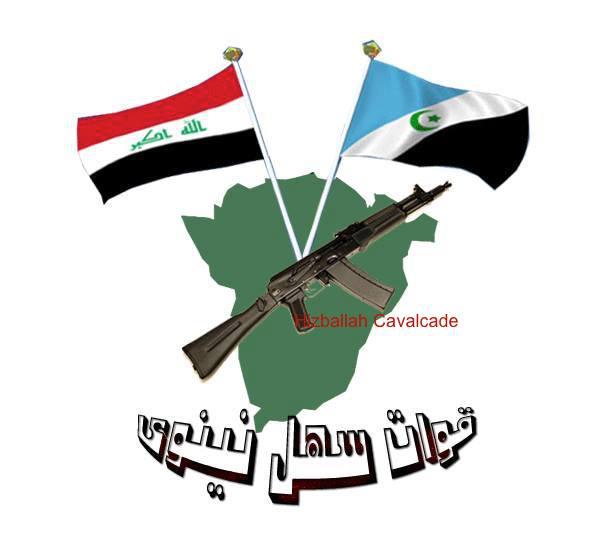
Figure 1: Quwat Sahl Nīnawā’s logo. The Iraqi (left) and Shabak (right) flags emerge out of a map of the Hamdaniya region of the Nineveh Plain. The symbol also features an AK-102 rifle.
Quwat Sahl Nīnawā (A.K.A. Liwa Sahl Nineveh or QSN) purports to be a Shia Shabak militia associated with the Democratic Assembly of Shabaks (Tajema’ al-Shabak al-Dimokrati or DAS).1 QSN announced itself via a November 23, 2014 official statement posted on the website and social media apparatus belonging to the DAS. The group has also already claimed to take casualties in the fight against the Sunni jihadist “Islamic State” (A.K.A. IS, ISIS, or ISIL).2
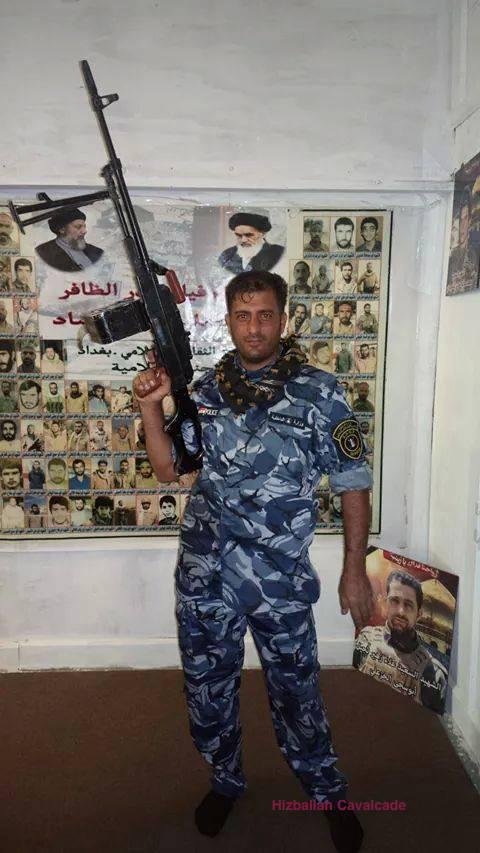
Figure 2: A QSN fighter poses with martyrdom posters (one featuring the dome of Sayyida Zaynab in Syria – bottom right) and other posters featuring Badr Organization founder Ayatollah Muhammad Baqir Sadr and the first Iranian Supreme Leader Ayatollah Khomeini.
Present in the symbols and photos, QSN mixes a limited quantity of Shabak particularism and an added emphasis on Shia identity. On some pages the group has simultaneously promoted links to Iran’s proxy forces. While the group may have relations with Iran’s proxies, its official statements have announced a commitment to “gladly serve the supreme religious authority in Najaf [Grand Ayatollah Sistani].”3 This would likely indicate the group is not an equivalent (in terms of ideology and/or levels of control) to newer Iraqi Shia Iran-proxy militias such as Hizballah al-Abrar.
Photos claiming to show the group training also indicate that they may be assembled along the lines of a “Popular Assembly/Mobilization” or “al-Hashd al-Sha’abi” type group. Photographs of claimed QSN fighters holding flags promoting al-Hashd al-Sha’abi add further credence to this likelihood. Organization along those lines would mean many of the fighters are possibly newer recruits trained and likely led by more experienced personnel and advisors.
In photos of QSN, around 100 fighters were shown posing in ranks. This suggests the numbers for the group are likely in the range of 100-500 combatants.
The creation and promotion of the group may exemplify another method Iran and its proxies are using to place pressure on Kurdish organizations. QSN, as organized along lines of the more dominant Iraqi Arab Shia militias in the south of the country, also demonstrates the direction in which other new militias may be organized. QSN further exemplifies how some of Iraq’s minority groups are mobilizing against ISIS.
The Name & Symbols
QSN’s name directly refers to an area of heavy Shabak habitation, Iraq’s Ninewa (or Nineveh) Plain. Their logo and a post by the Shabak Democratic Assembly describes the group as “Quwat Sahl Nīnawā” or the “Nineveh Plain’s Forces.”4 Albeit, via social media, one page purporting to belong to the group claimed it also went by the name of “Liwa Sahl Nīnawā” or the “Nineveh Plains Brigade”. However, such minor alterations in name are common during the early stages of many new militias.5
The group’s logo also demonstrates a rather rudimentary approach to create symbolism for the new group. Readily available images (including the pictures of an AK-102 rifle, the Shabak and Iraqi flags, and a map of the Hamdaniya area of the Nineveh Plains) were likely pasted together following a simple image search online.6

Figure 3: A QSN fighter poses with a flag associated with the Popular Mobilization type militias.

Figure 4: QSN fighters congregate.
Who Are the Shabak & What is the Nineveh Plain?
The Nineveh Plain is a minority rich area; home to the Shabak, numerous Christian sects (including the Assyrians, Chaldeans, and Syriac Orthodox and Syriac Catholics), Turkmen, Yezidis, and Kurds.7 Considered a heartland for Iraq’s Christians, Assyrian Christian and other Syriac (Aramean, Syriac, and Chaldean) Christian nationalist organizations and political parties have pushed for autonomy in the area.8 There has also been a campaign to make the Nineveh Plain its own province (under primarily Christian leadership) within the Iraqi federal framework.9 Nevertheless, the Plain has not been granted a truly autonomous standing.
Many Shabak insist they have a unique ethnic identity, which is neither Arab nor Kurd (albeit, primarily non-Kurdish).10 The group also speaks its own language, Shabaki.11 Most Shabak are also religiously (Twelver) Shia.12
Within the Nineveh Plain, the Shabak primarily live in villages to the east of the city of Mosul, in the Hamdaniya area, and a few thousand also lived in the city of Mosul (before the invasion). Due to ISIS advances, many Shabak hamlets have been overrun.
The Democratic Assembly of Shabak & Issues With the Kurds
While QSN was ostensibly created as a Shabak arm to fight back ISIS threats and offensives targeting the Shabak, there are other underlying trends present with the creation of the militia associated with Shabak-Kurdish relations.
Kurdish groups have shown interest in further incorporating areas of Shabak habitation into Kurdistan.13 As early as 2008, minority groups including the Shabak claimed there was an effort to “Kurdify” areas they inhabited.14
Along with the promotion of a separate non-Kurdish identity, the DAS’s leader and parliamentarian Hanin Qaddo has specifically called out Kurdish parties for claimed abuses against the Shabak. In 2008 Qaddo opposed the incorporation of Shabak inhabited areas into Iraqi Kurdistan.15 Two years later, Qaddo denounced the Kurdish Democratic Party (KDP) for “intimidating” Shabak voters.16 In 2012 the Shabak leader demanded the expulsion of Kurdish and Christian armed forces from the Nineveh Plain.17
With this in mind, QSN’s establishment also recalls the 2012 decision by then Iraqi Prime Minister Nouri al-Maliki to allow for the creation of a 500-man Shabak militia force referred to as, “The Shabak Regiment of Doom.”18
For their part, many Kurdish political leaders have not been supportive of independent Shabak efforts to create their own militias. Nevertheless, some of those Kurdish apprehensions were downgraded following the ISIS advance. Thus, QSN has not been the only Shabak armed group to come into existence. However, its other counterpart is under the control of Kurdish military commanders.19 Whereas QSN is organized along lines set by Baghdad-supported Shia militias and Iran’s proxy groups and does not appear to be taking order from Kurdish commanders.
Tensions between QSN’s DAS parent party and Kurdish parties may explain for QSN’s retention of its independence. The DAS, the largest Shabak Party, is also part of the ruling Iraqi State of Law Coalition. This is the same coalition which included former Iraqi Prime Minister Nouri al-Maliki, the current Iraqi Prime Minister, the Badr Organization and Kata’ib Sayyid al-Shuhada, among other Iranian proxy groups. Nevertheless, Qaddo has “wavered between the Hakim and Maliki factions,” and then ran on the Badr Organization’s electoral list.20
The increase in Iranian proxy cooperation via training, equipping, and other support also speaks to other issues related to Iran’s and their proxies’ policies in Iraq. The policies in question are particularly focused on Kurdistan. From the summer of 2014 until the present, there has been increased tension between Iran’s Iraqi Shia proxies and Kurdish Peshmerga forces.21 Additionally, Iran’s proxies have also threatened Kurdish leaders such as Masoud Barzani.22
A push for support for a group which has already had problems with Kurdish leadership seems to be another avenue for Tehran to exert pressure on the Kurds. Nevertheless, QSN’s main goals and activities have and will likely remain oriented against the existential threat that is ISIS.
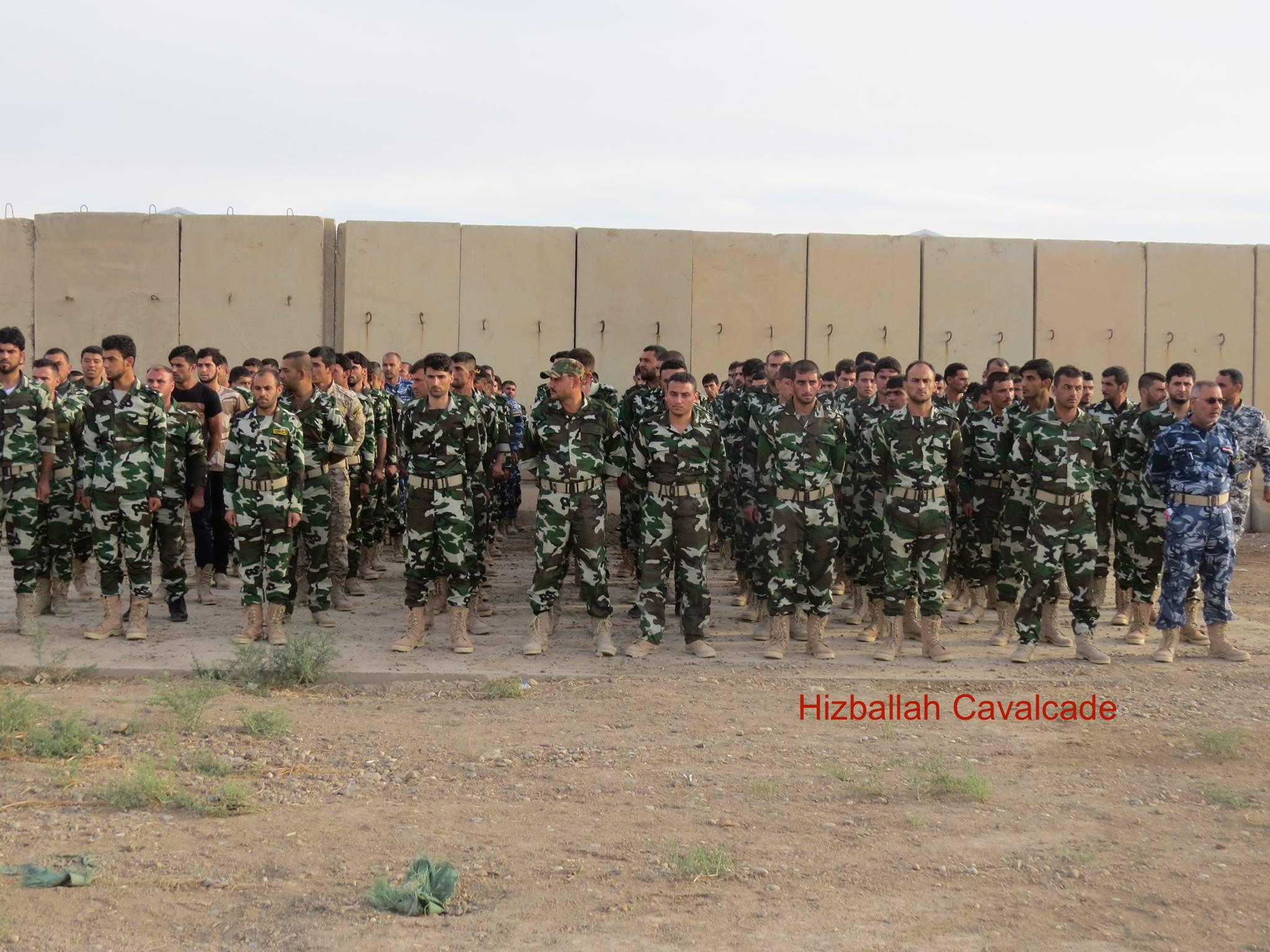
Figure 5: Around 100 QSN are shown in this photo.
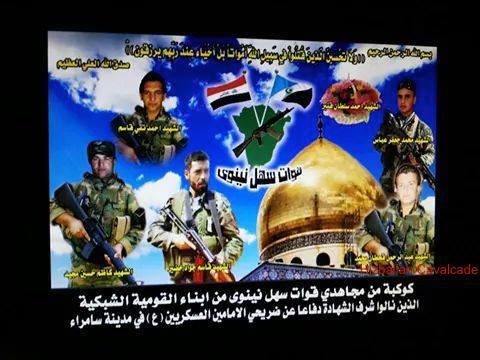
Figure 6: QSN Martyrs are shown on a poster featuring the dome of Syria’s Sayyida Zaynab. It is possible the dome was included by graphics designers to demonstrate that the fight in Syria and Iraq, marketed as “protection for shrines”, are one in the same.
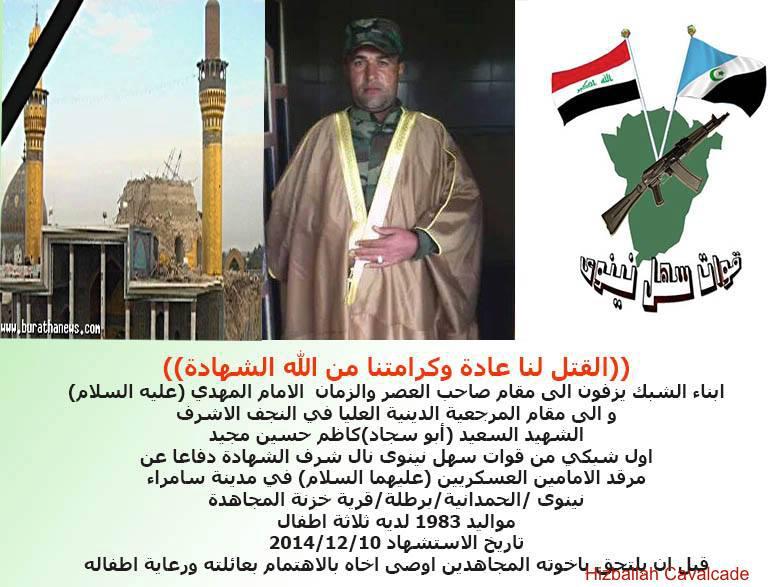
Figure 7: The martyrdom poster for Kazem Husayn al-Asharaf (Abu Sajad).
Videos
Notes:
_____________
The Clear Banner: Turkish Foreign Fighters and the Ogaden
The Clear Banner sub-blog on Jihadology.net is primarily focused on Sunni foreign fighting. It does not have to just be related to the phenomenon in Syria. It can also cover any location that contains Sunni foreign fighters. If you are interested in writing on this subject please email me at azelin [at] jihadology [dot] net.
—
Turkish Foreign Fighters and the Ogaden
By OSMahmood and North Caucasus Caucus
In recent months, there has been a major increase in international media coverage of Turkish citizens fighting alongside The Islamic State (IS). Much of the commentary has focused on the notion that this is abnormal behavior for citizens of the secular state. While this is partially true (the percentage of Turks in IS is even lower than some European countries by comparisons of percentage of total population), it should be recognized that at least for certain communities in Turkey, participating in jihadist conflicts is not abnormal, and those who participate are often honored. To provide a vivid example of this trend, this article will focus on a very specific case from 1996 of 14 Turkish foreign fighters who were killed in one of the lesser-known jihadi conflicts.
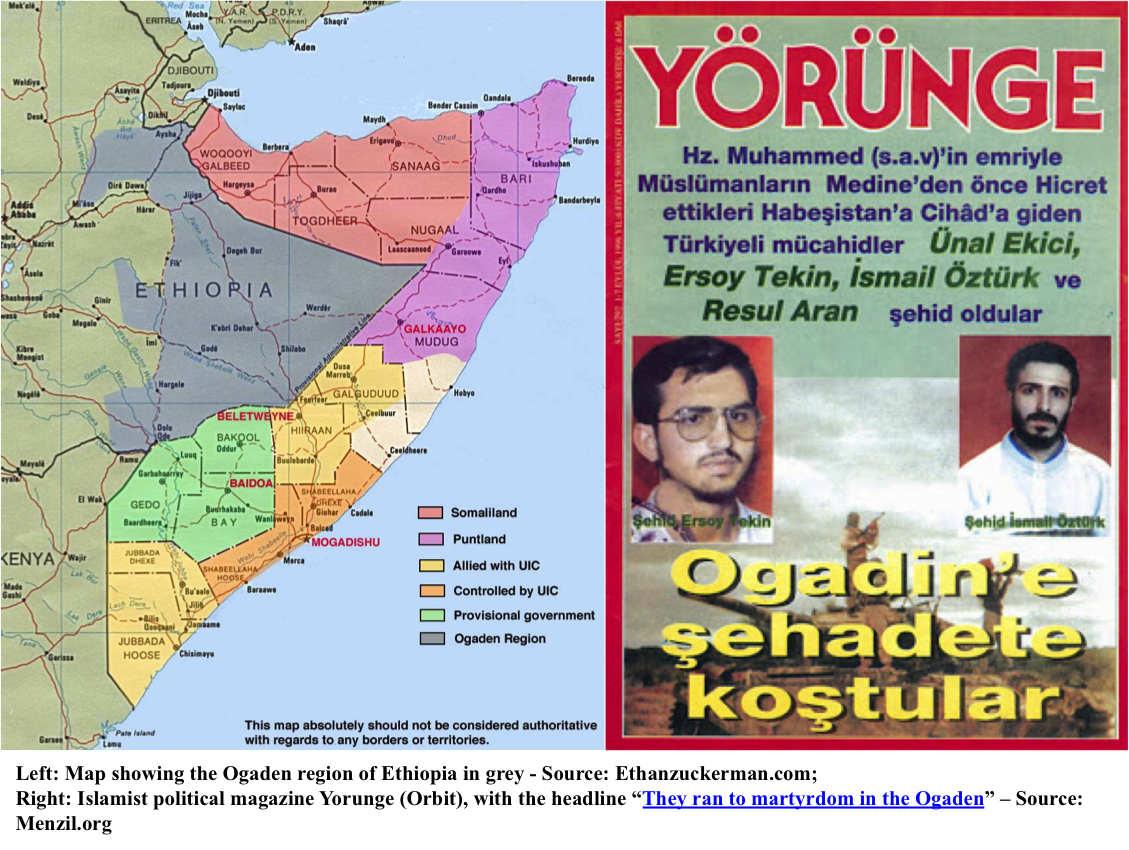
Conflict in the Ogaden
The year 1996 must have been a confusing time to be an aspiring jihadi. With the Dayton Accords ending the war in Bosnia the previous year, and the Khasavyurt Agreement temporarily halting hostilities in Chechnya, two of the premiere jihadist conflicts enticing foreign fighters came to an end. Given this context, some jihadis, including a group of young Turkish citizens, looked further afield to participate in one of the more obscure Islamist conflicts – the battle between ethnic Muslim Somalis and Ethiopian government forces in the Ogaden region of Ethiopia.
The Ogaden – A Basic Background
The Ogaden, consisting of the mainly ethnic Somali-inhabited eastern region of Ethiopia, has long had a contentious history. By the early 20th century, the region slowly came under the domain of the Christian empire based in the highlands of central Ethiopia, though control shifted to the British after the Second World War. The British returned the Ogaden to Ethiopia in 1948, along with the Haud in 1954 (the north-eastern section used as a grazing land by nomadic Somali herders), effectively signaling the demise of a ‘Greater Somalia’ that united all Somali-inhabited lands, much to the chagrin of many Somali nationalists.
The reincorporation of the Ogaden into Ethiopia sparked a host of resistance movements and a devastating Cold War-infused proxy battle with Somalia in 1977-78. Following the collapse of the Mengistu government in Ethiopia in 1991, the Ogaden National Liberation Front (ONLF) assumed control of the region under Ethiopia’s federal structure. The harmonious relationship between the ONLF and the new Ethiopian government, however, did not last – by 1994 the ONLF had divided, with a wing renouncing its political position in favor of armed resistance.
The Rise and Fall of Islamist Interest in the Ogaden
During this time, the struggle for the Ogaden caught the eye of Islamist actors in Somalia. While the ONLF operated as a secular, nationalist party within Ethiopia, often accused of narrowly representing the Ogaden clan, al-Ittihaad al-Islami (AIAI) in Somalia developed a branch focused on the Ogaden that infused Somali irredentism with Islamist rhetoric, adding a new, albeit somewhat peripheral dimension to the struggle. The conflict was often portrayed in terms of Somali Muslims rising up against a Christian entity. Based in Luuq along the Ethiopian-Somali border, AIAI’s Ogaden wing also established training camps within the Ogaden itself, and even conducted a series of attacks in Ethiopia’s two largest cities in 1995-6.
Osama bin Laden also developed an interest in the Ogaden during his stay in Sudan from 1992-96, so much so that during his August 1996 declaration of jihad against the United States, the al Qa’ida (AQ) leader referenced the region amongst a host of other global hotspots where Muslims have suffered at the hands of a “Judeo-Christian alliance.” Representatives from al Qa’ida traveled to the Ogaden in the early 1990s and aided in the establishment of training camps, with bin Laden himself reportedly investing $3 million to bring foreign fighters to the region, cementing the Ogaden on AQ’s early 1990s horizon [Note: The vast majority of open-source information regarding AQ activities in the Ogaden during this time period comes from declassified documents in the Harmony Database, obtained by the Combating Terrorism Center and analyzed in its 2007 report Al-Qaida’s (Mis)Adventures in the Horn of Africa].
Ethiopia, however, responded forcefully to the 1995-6 attacks, bombing camps in Luuq on 9 August 1996 and again in January 1997, effectively routing AIAI. Combined with Osama bin Laden’s move to Afghanistan and AQ’s struggles in Somalia, the Ogaden likely fell off AQ’s map. With AIAI decimated, resistance to Ethiopian rule returned to the realm of the secular, clan-based ONLF, a stiutation that largely persists to the present day.
Turkish Involvement in the Ogaden
Much of the information for this article was drawn from Turkish language sites dedicated to Turkish Islamist martyrs killed in conflicts outside Turkey (as well as those killed fighting Kurdish separatists), such as sehidlerimiz.com and menzil.org. These websites purport to reproduce contemporary reporting from the time of the fighters’ deaths and often provide images of the news articles, primarily from local newspapers. Due to the age and second hand nature of much of this material, some caveats apply, especially as data on Turkish fighters who may have gone to fight but ultimately survived is not available.
As in Syria, looking into the backgrounds of fighters reveals connections to other jihadist conflicts and/or friends and family serving as pulling factors. Below we will describe the experience of a number of the Turkish fighters – who likely joined with the Islamist AIAI’s Ogaden wing, and were all reportedly killed along the Ethiopian-Somali border on two different days between August and December 1996.
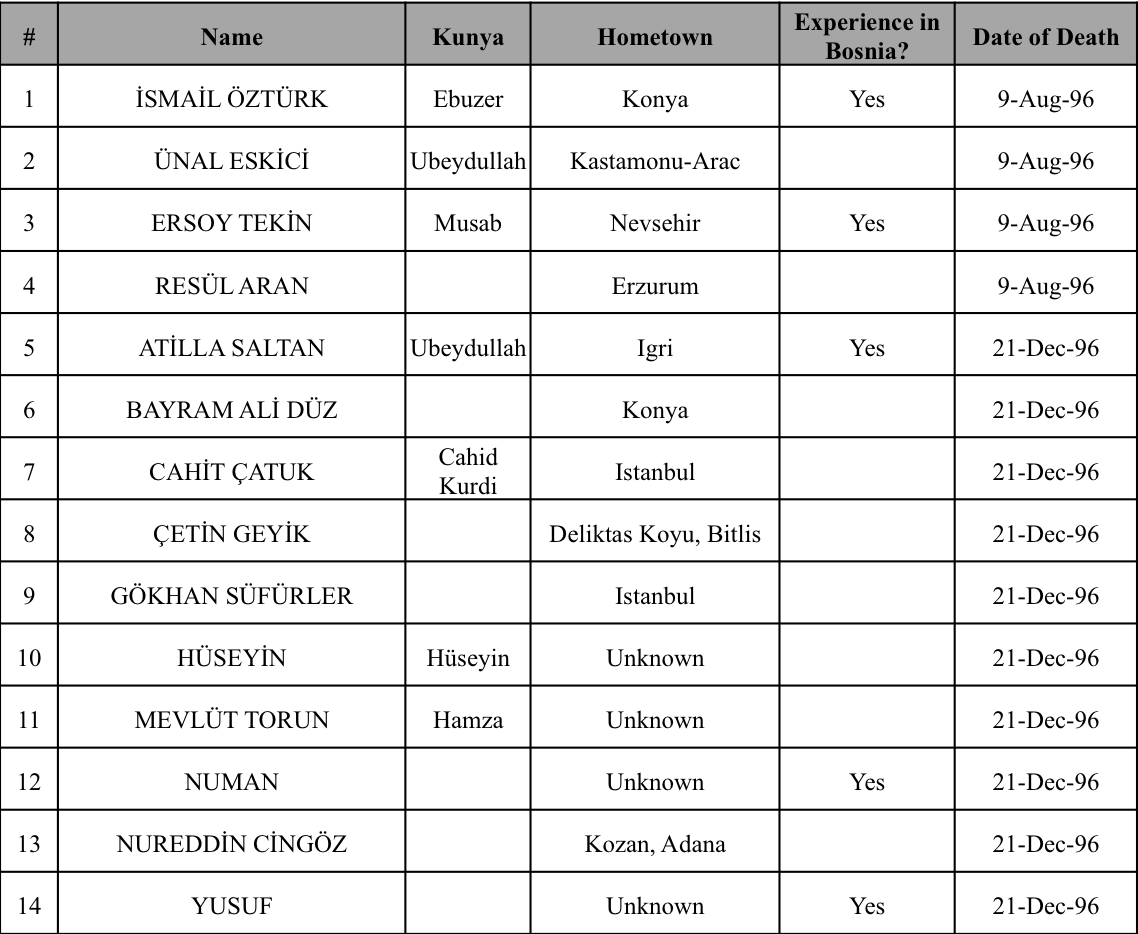
Backgrounds and Parental Involvement
From the available information, the majority of the 14 Turkish fighters killed in Ogaden had similar backgrounds – early 20s, often college students or professionals, and idealistic. One fighter, Nureddin Cingöz from Kozan, Adana, had graduated from a theological imam-hatip high school, where he allegedly won first place in a hadith knowledge competition. However, when he left with his friend, Bayram Ali Düz, for the Ogaden, both were students at Konya’s Selcuk University.
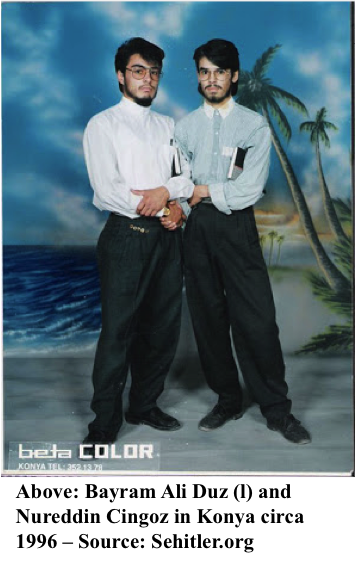
In some cases, fighters seemed to travel without support from their families. For example, Gökhan Süfürler graduated from a vocational high school in Istanbul before taking a job as an accountant working at a company in Kartal. After he left his job, Süfürler’s father wanted him to work at a different job before completing his military service, but Süfürler “claimed to have higher ideals,” according to his father. According to a letter he sent home, Süfürler wrote that he felt guilty living a good life in Turkey while injustice and deprivation occurred elsewhere. In an interview with Selam Gazetesi, Sufurler’s father explained that while he was born in Istanbul, his family was originally from Salonica, Greece and was quite secular. However, his father and other family members started praying more regularly after his son’s death.
In other cases, families appear to have been supportive. In an interview after his death in the Ogaden, Ismail Ozturk’s father stated that his son’s death should not be treated as a tragedy, but as martyrdom. Ozturk’s father went on to say that when his sons were young he brought back Islamic books from Libya where he was working, and that he tried to pass on his religious convictions. Ismail took his upbringing to heart and went to Bosnia, but the war ended two or three weeks after his arrival. He returned to Turkey changed and even more committed to jihad. He later tried to join the conflict in Chechnya, but was turned back by Russian preventative measures. After these failures, Ozturk decided try his luck in the Ogaden. This time, however, his father allegedly tried to convince him to stay and get married, demonstrating the at times shifting nature of familial support for such activities.
The Bosnian Connection
The conflict in Bosnia appears to have served as a central bridge to the Ogaden, with many fighters meeting there and deciding their next destination. One figure who seems to be especially important as a link between Bosnia and the Ogaden is Atilla Saltan. A young man from Agri in eastern Turkey, Atilla eventually got a job in advertising in Istanbul. While there, he became engaged in the study of the Quran and other religious activites, eventually leaving his job. He moved to Germany, staying with family and decorating a local mosque. His apparent motivation was to make his way to Bosnia to fight, arriving there in November 1995. When the ceasefire came into effect on 14 December 1995, however,
New video message from Tsumadinsky District of Wilāyat Dagestān of Imārat al-Qawqāz’s Abū Mu'ādh: "Bay'ah to the Muslim Caliph Abū Bakr al-Baghdādī"
_____________
To inquire about a translation for this video message for a fee email: [email protected]
New video message from The Islamic State: "Tal'afar Training Camp – Wilāyat Nīnawā"
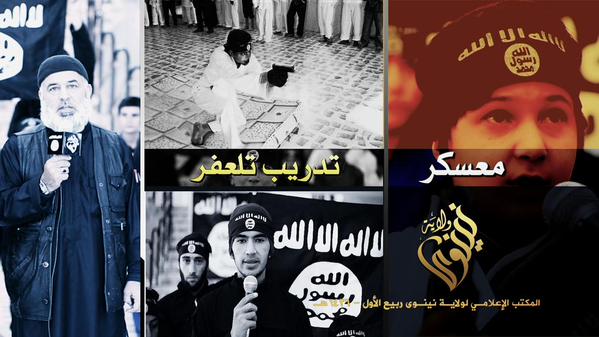
____________
To inquire about a translation for this video message for a fee email: [email protected]
New video message from Wilāyah Dagestān of Imārat al-Qawqāz's Abū Muḥammad al-Dagestanī: "Message to the Muslims"
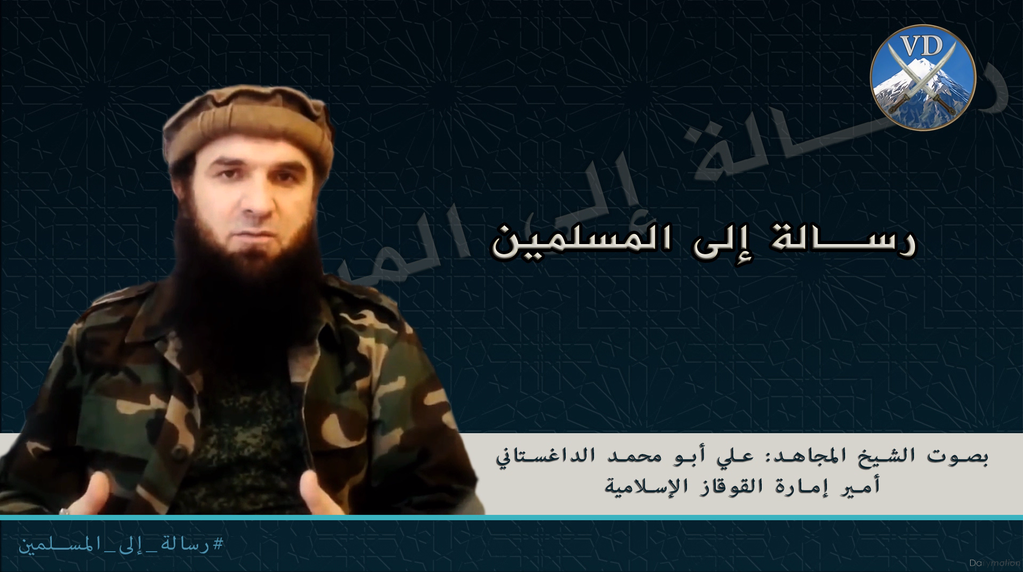
_____________
To inquire about a translation for this video message for a fee email: [email protected]
New statement from al-Murābiṭūn’s Khālid Abū al ‘Abbās (Mukhtār bin Muḥammad Bilmukhtār): "Blessing and Support"
Click the following link for a safe PDF copy: Khālid Abū al ‘Abbās (Mukhtār bin Muḥammad Bilmukhtār) — “Blessing and Support”
____________
To inquire about a translation for this statement for a fee email: [email protected]
New statement from Jabhat al-Nuṣrah: "Indeed Our Solders Are Those Who Overcome"

Click the following link for a safe PDF copy: Jabhat al-Nuṣrah — “Indeed Our Solders Are Those Who Overcome”
________________
To inquire about a translation for this statement for a fee email: [email protected]
New video message from The Islamic State: "Spread of Soldiers of the Caliphate in the City of al-Mawṣil (Mosul) – Wilāyat Nīnawā"
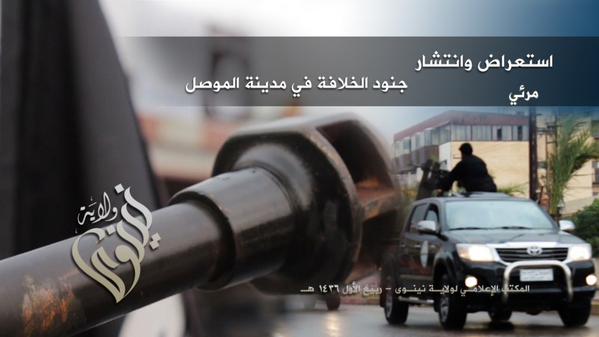
_____________
To inquire about a translation for this video message for a fee email: [email protected]
